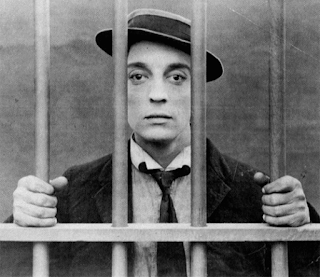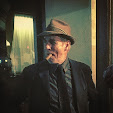Saturday, May 02, 2009
Bending Time
Mastering The Pointe Fixe
Georges Bigot of the Theatre du Soleil called it an arête.
The Japanese use it in Kabuki where they call it a Mie, (pronounced Mee- ay) and Phillippe Gaulier calls it a “check”.
Jessica Kubzansky, who directed me in The Thousandth Night and is the Artistic director of the Boston Court Theatre used to call it “The Oops Moment”.
Call it what you like, it is one of the most fundamental weapons in the actor’s arsenal and is de rigueur for effective clowning especially in the 2500 seat Grand Chapeteau that houses Kooza.
Simply put, the pointe fixe is a break in the action. A momentary silence in the cacophony of movement. A caesura in the flow of thoughts and movement that can be used to clarify, protract and/or frame the tsunami of funny that the Clown rides.
It is a delicate thing.
It can be as brief as a heartbeat.
It can be elongated like a tintype pose.
And the Clown/Artist must select its placement with care.
It is a present, active kind of snapshot.
It is a still inserted in the home movie of your performance.
It is a chance for the audience to receive your state without the distraction of movement.
Every actor knows movement trumps words in the game of directing the audience’s attention and pointe fixe trumps movement.
What it is not:
It is not a freeze.
It is not neutral.
It is not a hold.
It is not an “aside” though it can serve as one.
The pointe fixe lets the audience in on the human mechanism’s decision process.
For example:
I’m skipping along, happy.
I step on a tack. I’m angry.
The pointe fixe goes between the two emotions.
You see little kids do it when they fall on their face.
They take a little pointe fixe decision moment: Anybody around? No? Move on.
Mommy there? Concern etched on her face?
Cry.
It’s interesting.
The facility I have to go from one step to the other; happy to sad, angry to afraid and back again doesn’t help me here. The pointe fixe lives between these states and I must learn to honor it.
It demands unbiased sincerity. It is a chance to check in with the audience even as the audience checks in on you.
No Ideas
Georges Bigot used to emphasize entering the stage with “no ideas”.
(Again with the nakedness)
Pointe fixe is not the decision, it is the naked moment before the decision is made.
It’s almost mathematical. Action (a) happens. Action (b) is the reaction. Between (a) and (b) is the pointe fixe. And inside the pointe fixe dwell a series of questions:
What just happened? Has it ever happened to you out there in the audience? Or anything like it? What should I do next? I have no idea.
Bending Time
Time on stage is of course different from real time. (Anyone who has gone up on a line or waited for a missed entrance can attest to that.)
With the pointe fixe you can bend time to your will.
One of my fellow clowns in Kooza, Jimmy Slonina, has a brilliant moment of pointe fixe- with one of our Volunteer/Victims no less.
The audience member is enlisted to skip joyously around the stage. After a terrific fall Jimmy confronts the victim whom he blames for his tumble. He walks over, plants his feet and… pointe fixe.
The laugh that slowly mounts there to a crescendo is a result of Jimmy, the Victim and the entire audience living in a protracted pointe fixe.
The Big Gulp
Other examples of pointe fixe:
Buster Keaton’s face is in a perpetual pointe fixe.
Robert DeNiro in Taxi Driver:
“You talkin’ to me? (pointe fixe)
”You talkin’ to me? (another pointe fixe)
Bruce Lee in Enter The Dragon:
The evil Mr. Han slashes his chest. He tastes the blood with the tip of his finger, (pointe fixe) and assumes his fighting pose.
Now I see them everywhere. Done well you might not even notice them, but they’re there.
Abused, they can sap a performance of its rhythm and flow. Used well, they are invaluable stepping stones on the path to a complete and joyful experience for the audience.
If the goal is to help your audience digest every morsel of your performance, the pointe fixes are the gulps.
Subscribe to:
Post Comments (Atom)



No comments:
Post a Comment